|

Page 1 2
3 4 5
6 7 8
9 10
Monday, 20 November. Today's tour was to the city of Granada to see the Alhambra. The bus departed at 8:30 and, after a rest stop at Rio Frio, we got to Granada about 10:30.
Granada is high in the mountains, within sight of the snow covered peaks of the Sierra Nevada
(which, in fact, means "snow covered peaks). The weather hadn't been bad near the coast, but it
deteriorated steadily as we climbed into the mountains. By the time we got to Granada, it was
heavily overcast and drizzling steadily, and it stayed that way. Jane and I had been to Granada on
a tour in April 1972 and were delighted to be back, notwithstanding the weather.
There had been settlements here for many centuries before the Romans came and built a
fortress on Albaicin Hill, where the old Moorish casbah is now found. When the Moors arrived in
the 8th century, they occupied the area along with the rest of southern Spain. But it was only after
the fall of Cordoba to the Christians in 1256 that Granada became an important city. The center
of Moorish power was transferred to Granada, bringing a massive influx of nobles, architects and
money which eventually led to the construction of the Alhambra. Granada was the only surviving
bastion of Islam in Spain until finally the last Arab king had to relinquish the city to Ferdinand
and Isabella in 1492. During those intervening two and a half centuries, the city reached a cultural
zenith. The Spanish further enriched Granada with splendid Renaissance and baroque buildings
for nearly another century before the city's importance began to decline. Both Ferdinand and
Isabella chose to be buried here because they considered the conquest of Granada their crowning
achievement.
Our bus took us on a brief tour of the city before dropping us at the Alhambra. This
storied complex was an alcazaba (fortress), an alcázar (palace) and a small medina (city), all in
one. Although there was earlier construction here, most of what remains was built over a hundred year period from the mid-13th to the mid-14th
century. Each
of several successive rulers built his own palace within
the palace complex. The Alhambra is considered the finest example of Moorish
architecture in Spain. It owes much of its fame to author Washington Irving, who was inspired to
write his famous "Tales of the Alhambra" while actually living in an apartment in the Alhambra
for a few months in 1829. The entire structure was badly deteriorating when Irving visited it, but
extensive restoration began soon after.
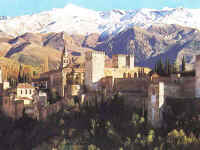
The Alhambra |
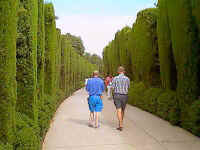
Entrance path |
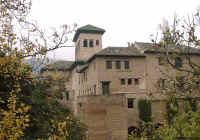
Palace complex |
The Italian renaissance Palace of Holy Roman Emperor Charles V, designed by a student of
Michelangelo, was added in the 16th Century. That was the first stop on
our tour.
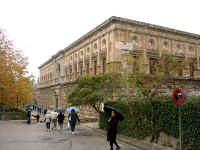
Palace of Charles V |
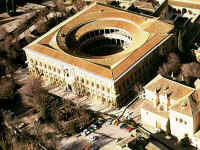
Aerial view |
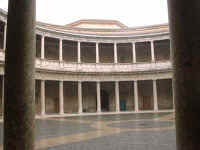
Palace courtyard |
We then moved on to the Palace
complex. The Palace has three main parts: the Mexuar (for judicial and administrative purposes),
the Comares (for official purposes) and the Royal Residences (for the Kings private life).
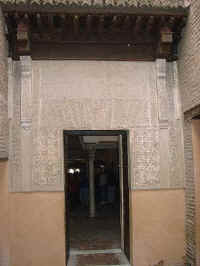
Entrance to Mexuar |
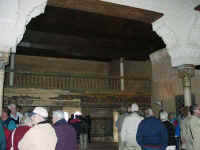
Inside the Mexuar |
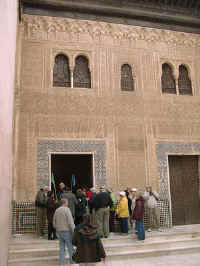
Entering Palace of Comares |
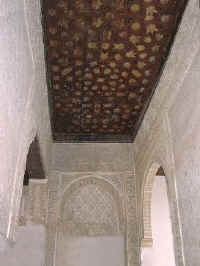
Ambassador Room (Comares) |
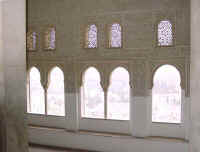
Palace windows |
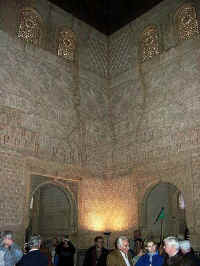
Inner room |
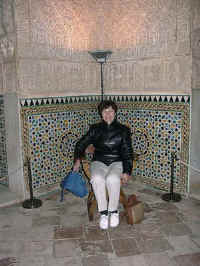
Jane on throne |
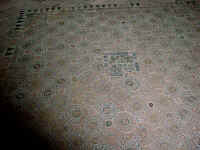
Original 13th Century floor |
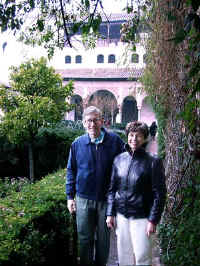
Us in a "Patio" |
Interspersed between the Palace buildings are several "patios,"
each with some variety of pool and fountains.
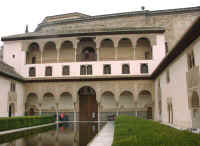
Another "Patio" |
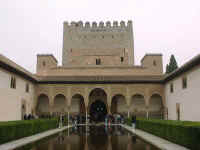
Patio de los Arrayanes |
Probably the most elaborate
of the royal quarters is the Palace of Muhammad V, where four great halls enclose the famous Patio de los
Leones (Lions' Court). The figures of lions are unusual in Arabian art because the
depiction of animals (as well as humans) is forbidden by the Koran.
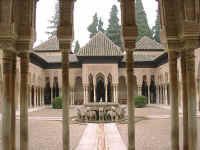
Patio de los
Leones |
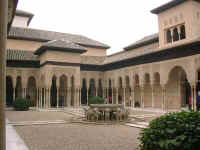
Patio de los
Leones |
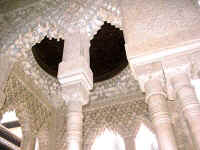
Palace arches |
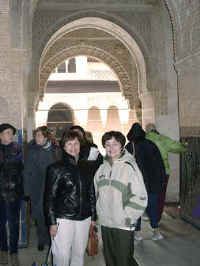
Jane & Kyoko |
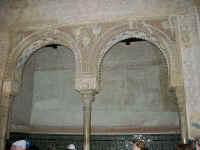
Arches |
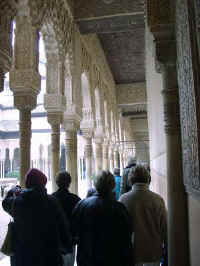
Colonade |
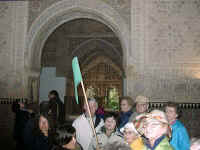
Tom & Kyoko |
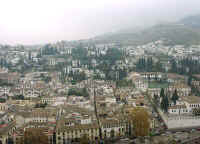
Albaicin from Alhambra |
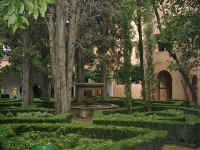
Interior courtyard |
After an extensive tour of the complex,
we then walked up to the nearby Generalife (1318), a
summer palace with countless little
channels, fountains and water jets everywhere in the lovely gardens. The Arabs, coming from an arid
climate, has a special appreciation for water and incorporated it profusely into their palaces.
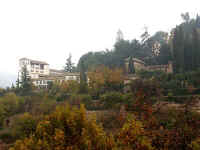
El Generalife |
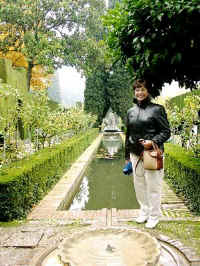
Jane in gardens |
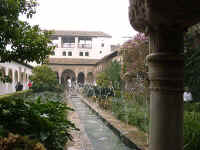
Generalife fountains |
We had spent three hours exploring the palaces when we at made our way back to the bus
at about 1:45. We were driven to the Cerezos Hotel for a very nice lunch. A group of musicians
serenaded us as we ate. As we drove south toward the coast, the weather improved steadily, and it
was sunny and pleasant when we got to Torremolinos at 4:40. We had dinner at El Trillo with
Tom and Kyoko.
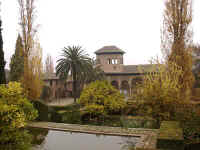
Gardens |
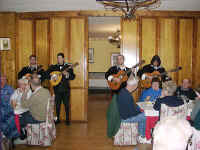
Musicians play for us |
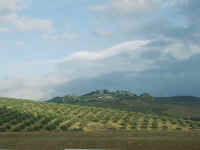
Citrus trees |
Page 1 2
3 4 5
6 7 8
9 10
|